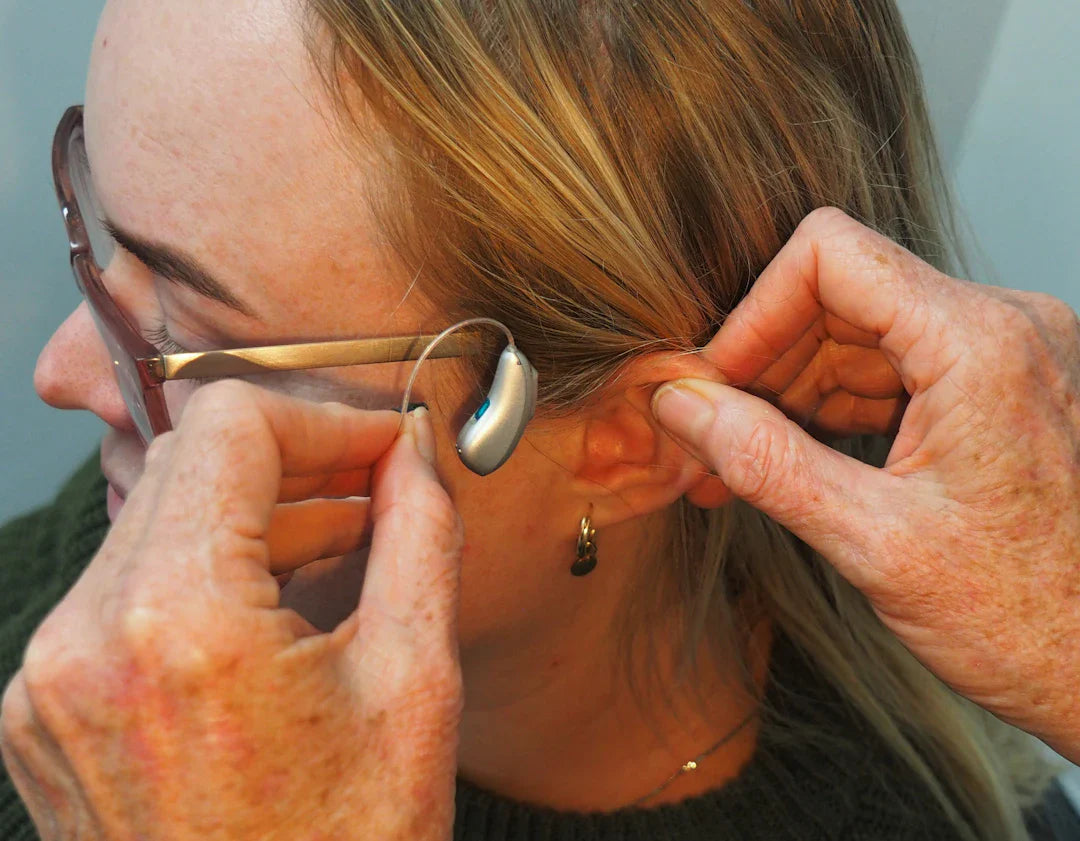The world of hearing aids is evolving at an astonishing pace, driven by advancements in technology, changes in consumer needs, and a growing awareness of hearing loss in society. For those who have relied on traditional devices and methods, the landscape of audiology is transforming into one that is more advanced, personalized, and accessible. In this blog post, we will delve into the major trends shaping the future of hearing aids, including enhanced functionality, integration with modern technology, and a focus on proactive hearing care.
The Shift Towards Rechargeable Hearing Aids
Rechargeable hearing aids are becoming increasingly popular, as users look for convenience and sustainability in their devices. Traditional disposable batteries can be a hassle, requiring frequent replacements and creating waste. The introduction of products like the Insio Charge&Go AX charger has made it easier for users to keep their devices powered throughout the day without the need for constant battery changes.
This trend aligns with the wider move towards eco-friendliness in consumer electronics. Rechargeable hearing aids not only reduce environmental impact but also offer improved performance, as they maintain consistent power levels throughout the day. As battery technology continues to improve, we can expect even longer-lasting devices that enhance users' experiences.
Smart Technology Integration
Just as smartphones have revolutionised the way we interact with technology, hearing aids are also beginning to incorporate smart features. The integration of AI and machine learning into hearing aids allows for unparalleled personalisation and adaptability. These devices can automatically adjust settings based on the user's environment, whether they are in a quiet room or a bustling café.
Real-Time Adjustments and Connectivity
With the advancements in smartphone technology, hearing aids are now often designed to sync with mobile applications. Users can manage their devices directly from their phones, adjusting volume levels, changing programmes, and even conducting remote adjustments alongside their audiologists for ongoing hearing care. This means that patients are no longer passive recipients of audiological care but active participants in their journey towards better hearing.
Health Monitoring Features
Emerging technologies in hearing aids also incorporate health monitoring capabilities. Devices can track data related to physical activity and environmental sounds. Hearing professionals can access this data to provide a more comprehensive service, focusing on both audiology needs and overall well-being. Innovative features such as fall detection and heart rate monitoring may soon be standard in most devices, thereby placing hearing aids at the very centre of personal health management.
Emphasis on Aesthetics and User Preference
Gone are the days when hearing aids were bulky and unattractive. With technological advancements, manufacturers are now producing sleek, stylish designs tailored to fit various lifestyles. Personalisation is key, and consumers are looking for devices that not only work well but also complement their personal style.
Customisation Options
The ability to customize the colour, shape, and design of hearing aids is a growing trend. This push for aesthetics has led to options that allow users to express their individuality as opposed to merely blending in. Additionally, the use of hypoallergenic materials has led to greater comfort, especially for long-term wearers.
Enhanced Earwax Removal Techniques
Earwax removal is an essential aspect of hearing care that significantly affects the performance of hearing aids. As technology advances, there is a noticeable shift towards improving earwax removal processes. Many modern hearing aid designs are engineered to resist earwax build-up, thus increasing the longevity and efficacy of the devices. Furthermore, audiologists are increasingly adopting tools and techniques that ensure a safe and effective earwax removal process.
With the advent of microsuction techniques and advanced cleaning tools, patients can now receive more comfortable appointments that promote better overall audiology. It is essential to regularly maintain hearing aids and cleanse them of any earwax to fully optimise their function.
The Rise of Tele-Audiology
In recent years, the concept of telehealth has gained traction, and it is making significant inroads into the field of audiology. Tele-audiology allows hearing care professionals to evaluate and manage hearing loss without the need for in-person visits. This trend has been particularly beneficial during challenging times when face-to-face consultations may have been restricted.
Accessibility for All
Tele-audiology enables patients in remote or underserved areas to access high-quality hearing care. This opens doors for more people to seek help for their hearing loss, promoting earlier diagnoses and better management strategies. With a user-friendly interface, patients can conduct virtual appointments, receive comprehensive assessments, and even adjust their hearing aids with the guidance of a professional from the comfort of their homes.
Patient Empowerment
This trend towards tele-audiology also empowers patients. By offering online resources, interactive platforms, and direct communications through telehealth, individuals can play an active role in their hearing care journey. This collaborative approach not only enhances patient satisfaction but also leads to better management of hearing loss and improved quality of life.
Focus on Mental Health and Social Well-being
Emerging research increasingly highlights the link between hearing loss and mental health issues. Individuals experiencing hearing difficulties often report feelings of isolation, frustration, and depression. As a consequence, future hearing aid solutions will likely place a stronger emphasis on addressing not just auditory needs, but also overall mental well-being.
Hearing Aids as Social Devices
Hearing aids will evolve to incorporate features that encourage social interaction. For example, tools that enhance sound quality in crowded environments will help users connect with friends and family more effectively, ultimately combating feelings of loneliness. Furthermore, initiatives geared toward community engagement and support groups can create a positive environment that encourages individuals to share their experiences and learn from one another.
Future Innovations on the Horizon
The future of hearing aids holds limitless potential. Researchers are exploring innovative materials and designs to improve sound quality further and to create smaller, more discreet devices. Nanotechnology, for example, may enable the development of ultra-compact hearing aids that can fit comfortably within the ear canal.
Collaboration with Tech Companies
As the line between traditional medical devices and consumer technology continues to blur, we can expect greater collaboration between hearing aid manufacturers and tech giants. This fusion of expertise will lead to features like seamless integration with smart home devices, voice-controlled settings, and even virtual assistants to deliver a truly connected experience.
In addition, the development of extended battery life and features that support wireless connectivity could change the way users interact with their hearing aids, providing them with an even richer auditory experience. The future lies in user-centric design and technology, where consumers can look forward to hearing aids that cater not only to their medical needs but also their lifestyle preferences.
Your Hearing, Your Future
In summary, the future of hearing aids is bright and full of potential. The trends we have explored here reflect a deep understanding of the needs of users—offering advancements in technology, a focus on aesthetics, and a commitment to enhancing both physical and mental well-being. As we continue to witness groundbreaking innovations, individuals experiencing hearing loss will find themselves with solutions that not only help them hear better but enrich their lives in countless ways.
Stay tuned to our blog for more insights into the world of audiology and hearing care, as together we embrace the sound of a healthier future.




